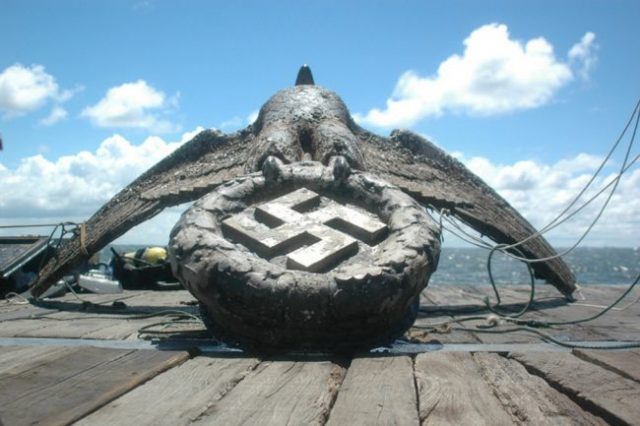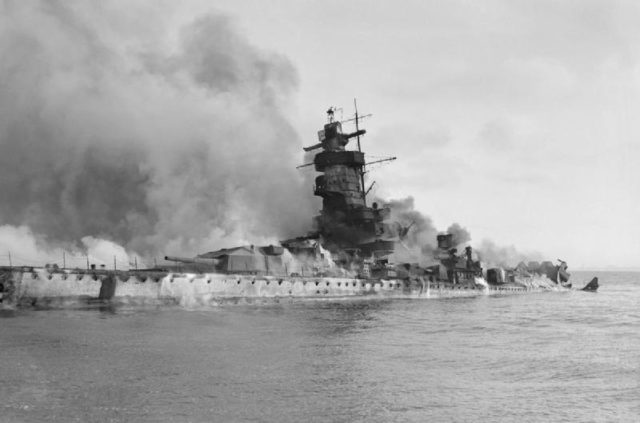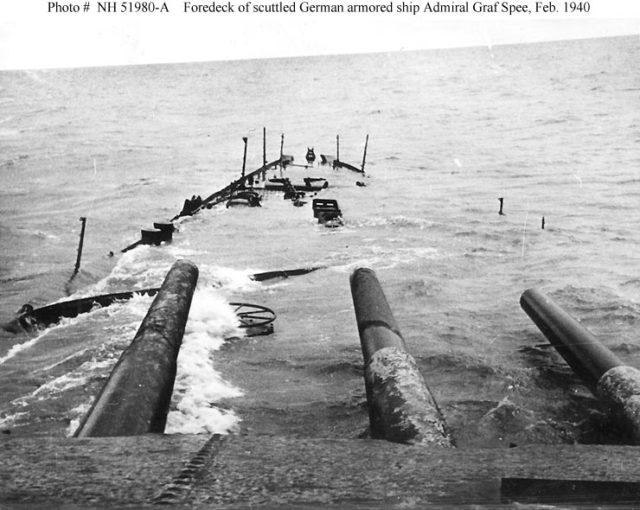Modern history is so littered with conflicting notions and events of monstrosity that reach epic proportions that a sane mind could (at least for some time) get perplexed when borders between facts, evil, and reconciliation become significantly hazy.
Just like any other evil empire or ideology that gave us bloodbaths and piles of corpses, the Nazis symbolized their Reich to such an extent that its grip was not only iron on the lives of the people, it became embedded in their collective consciousness.

A swastika with an eagle on its top that shone on the stern of the German battleship, Admiral Graf Spee, was salvaged by a team of researchers led by British divers.
The Second World War ended some seventy-one years ago; however, this artifact’s battle for recognition in history still continues. This solid bronze statue is highly regarded as the most precious and sought after war trophy with all the required imposing characteristics.
The crown sat on the stern of the warship Admiral Graf Spee, a German battleship that successfully ambushed and sank countless allied ships and merchant vessels in the days leading up to the Second World War.
The 700-pound solid bronze statue of the eagle sitting on top of a huge Swastika sank along with the Admiral Graf Spee in 1939 off the coast of Uruguay and was thought to have gone forever.
That was until 2006, when a local businessman Alfredo Etchegaray made the remarkable discovery; however after the giant artifact of Bronze Eagle Statue emerged from the waters no one really knew what to do with this amazing memory of the Third Reich that wreak havoc on the civilized world only a few decades ago.

In the days building up to the Second World War, Admiral Graf Spee created havoc while targeting merchant ships traveling to Europe from America.
The battleship had its days counted and was confronted in 1939 by allied forces and the fierce battle left most of the ship damaged and surrounded by enemies.
The boat was brought to the coast and scuttled, and seventy years on, the battleship fights another battle of ownership between the government and the scavengers, while at the same time being the center of a debate regarding the ‘ethical’ side of showcasing the symbol of Nazism and hate.
Allied planners wanted the Admiral Graf Spee out of the waters simply because it was causing considerable damage to the passing vehicles and had essentially created a buffer zone for the allied vessels.
The aim of the allied forces was to clear the passage and ensure the constant supply of provisions from North America to the European continent.

British Intelligence devised a plan and succeeded in tricking the captain of the Admiral Graf Spee to think that his ship is going to get surrounded by the allied battleships.
Captain Hans Lnagsdorff decided to abandon and scuttle the ship on the coast and days later committed suicide near the sunken wreckage of the Admiral battleship.
